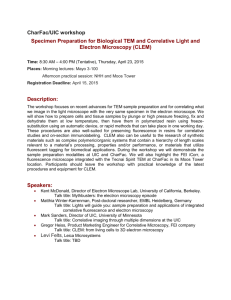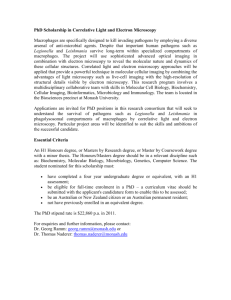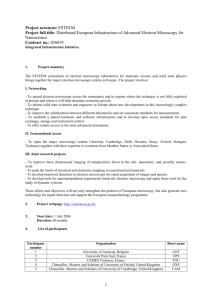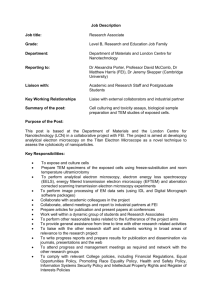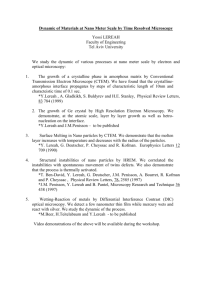In and out of mitosis – Correlative light and electron microscopy for
advertisement
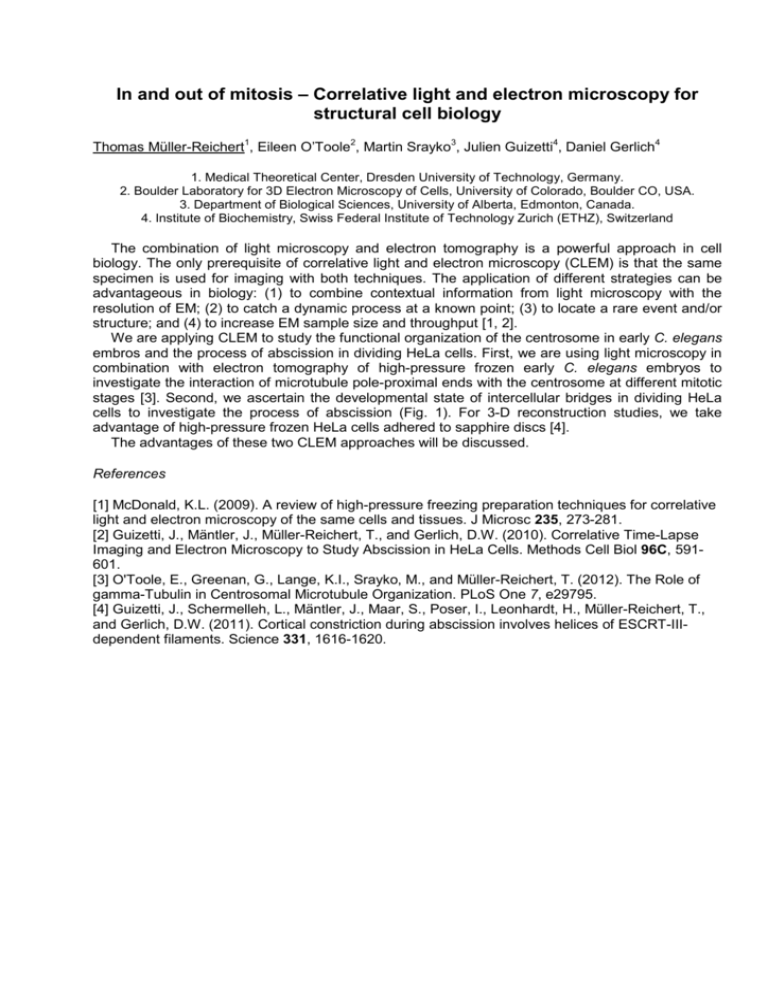
In and out of mitosis – Correlative light and electron microscopy for structural cell biology Thomas Müller-Reichert1, Eileen O’Toole2, Martin Srayko3, Julien Guizetti4, Daniel Gerlich4 1. Medical Theoretical Center, Dresden University of Technology, Germany. 2. Boulder Laboratory for 3D Electron Microscopy of Cells, University of Colorado, Boulder CO, USA. 3. Department of Biological Sciences, University of Alberta, Edmonton, Canada. 4. Institute of Biochemistry, Swiss Federal Institute of Technology Zurich (ETHZ), Switzerland The combination of light microscopy and electron tomography is a powerful approach in cell biology. The only prerequisite of correlative light and electron microscopy (CLEM) is that the same specimen is used for imaging with both techniques. The application of different strategies can be advantageous in biology: (1) to combine contextual information from light microscopy with the resolution of EM; (2) to catch a dynamic process at a known point; (3) to locate a rare event and/or structure; and (4) to increase EM sample size and throughput [1, 2]. We are applying CLEM to study the functional organization of the centrosome in early C. elegans embros and the process of abscission in dividing HeLa cells. First, we are using light microscopy in combination with electron tomography of high-pressure frozen early C. elegans embryos to investigate the interaction of microtubule pole-proximal ends with the centrosome at different mitotic stages [3]. Second, we ascertain the developmental state of intercellular bridges in dividing HeLa cells to investigate the process of abscission (Fig. 1). For 3-D reconstruction studies, we take advantage of high-pressure frozen HeLa cells adhered to sapphire discs [4]. The advantages of these two CLEM approaches will be discussed. References [1] McDonald, K.L. (2009). A review of high-pressure freezing preparation techniques for correlative light and electron microscopy of the same cells and tissues. J Microsc 235, 273-281. [2] Guizetti, J., Mäntler, J., Müller-Reichert, T., and Gerlich, D.W. (2010). Correlative Time-Lapse Imaging and Electron Microscopy to Study Abscission in HeLa Cells. Methods Cell Biol 96C, 591601. [3] O'Toole, E., Greenan, G., Lange, K.I., Srayko, M., and Müller-Reichert, T. (2012). The Role of gamma-Tubulin in Centrosomal Microtubule Organization. PLoS One 7, e29795. [4] Guizetti, J., Schermelleh, L., Mäntler, J., Maar, S., Poser, I., Leonhardt, H., Müller-Reichert, T., and Gerlich, D.W. (2011). Cortical constriction during abscission involves helices of ESCRT-IIIdependent filaments. Science 331, 1616-1620. Figure 1. Thin-section electron micrographs of intercellular bridges in post-mitotic HeLa cells. Scale bars, 500 nm.


